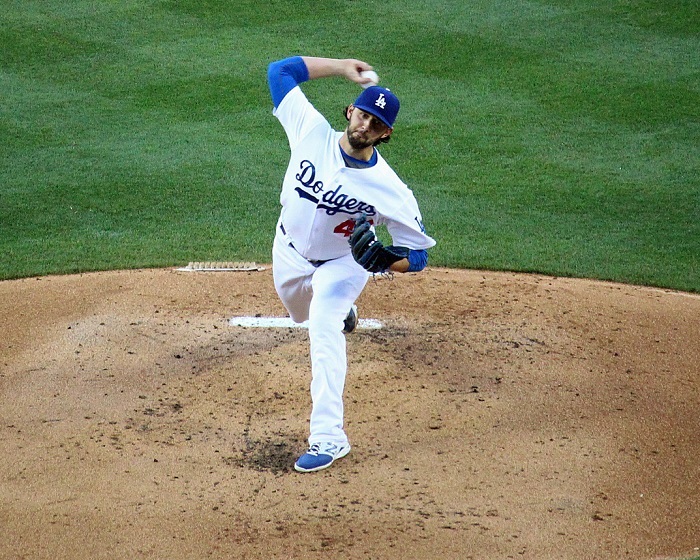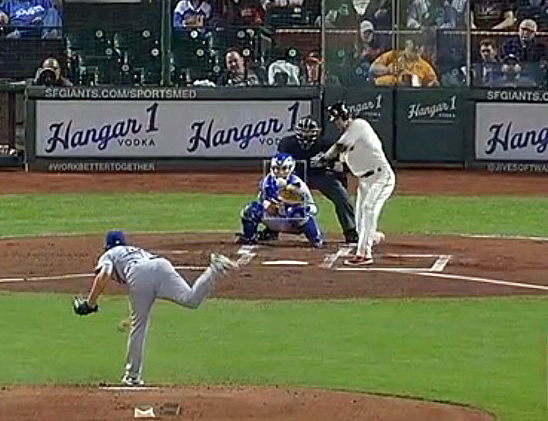When the Dodgers broke spring training camp back on April 1, they did so with only four starting pitchers and every expectation that their fifth starter, Hyun-jin Ryu (who was actually their number three) would be ready to go by the time a fifth starter would be needed three weeks into the new season.
It didn’t happen.
Soon one missed start became two for Ryu, and then two became three, and three became four and so on, until the 28-year-old Incheon, South Korea native finally conceded that his ailing left shoulder impingement was not going to heal with rest and rehabilitation and he finally decided to undergo season-ending shoulder surgery. In his stead, the Dodgers stayed with Clayton Kershaw, Zack Greinke, Brand McCarthy, Bret Anderson and a wide variety of fifth starters – 13 of them in fact.
For the most part the Dodgers four-plus-one rotation held it’s own and, in fact, kept the team in first place for all but the first few days of the season. But things took a drastic turn for the worse when right-hander Brandon McCarthy went down with right elbow soreness that required Tommy John surgery, thus turning the Dodgers four-plus-one rotation into a three-plus-two rotation.
But even then and even with a hodgepodge of spot-starters (not to mention an abundance of accrued frequent-flyer miles between Triple-A Oklahoma City and Dodger Stadium), the Dodgers were able to maintain their lead in the NL West – albeit rather scant at times – and eventually won the division this past Tuesday night over their archrival Giants.
But the path to their third consecutive division title included a couple of near-disaster acquisitions by Dodgers President of Baseball Operations Andrew Friedman and general manager Farhan Zaidi who instead of trading away top pitching prospects Julio Urias and Jose De Leon and shortstop Corey Seager, went out and acquired starters Mat Latos from the Miami Marlins and Alex Wood from the Atlanta Braves. In doing so they sent right-hander Mike Bolsinger, who had effectively worked himself into the starting rotation, back to Oklahoma City to create a roster spot for Latos and Wood for no other reason than he was the only starter in the rotation that still had minor league options.

When the Dodgers optioned Bolsinger back to Triple-A Oklahoma City on July 31, they shipped out their third best pitcher. (Photo credit – Ron Cervenka)
Although it appears that the Dodgers hit pay dirt with Alex Wood, the Latos acquisition was a complete and utter disaster for the Dodgers; and not just because his 0-3 record and 6.66 ERA in his five starts (and one even more disastrous relief appearance) with the Dodgers, but because they had replaced Bolsinger and his 5-3 record and outstanding 2.83 ERA with Latos.
As expected, the Dodgers recalled Bolsinger from Oklahoma City as a September 1 call-up. But what wasn’t expected is that the Mike Bolsinger that they had unceremoniously banished back down to the Minors on July 31 for the completely ineffective Mat Latos was not the same Mike Bolsinger that showed up on September 1 – this in spite of his 1-3 record and (still) outstanding 2.93 ERA that he posted in his five appearances (four starts) with the OKC Dodgers after July 31. In fact, the 27-year-old soft-tossing Chicago native is 1-3 with a Mat Latos-like 7.03 ERA in his five starts since returning to the big leagues.
But why the sudden change? How can a guy who had an almost Kershaw-like curveball – albeit from the right side – and who had allowed only three home runs in his 89.0 innings of work prior to July 31 and eight (that’s not a typo) in his 20.1 innings pitched since his September 1 return, suddenly transform from being very good to very bad in a grand total of 32 days?
“I don’t even know how to explain it, honestly,” Bolsinger said after Wednesday’s 5-0 loss to the Giants.
With the Dodgers needing only three starters in the first round of the playoffs, there is actually little chance that Bolsinger would have made that roster anyway – with the probables being Kershaw, Greinke and either Brett Anderson or Alex wood. But the good Lord willing, should the Dodgers advance to the League Championship Series, they will probably take four starters with them and Bolsinger has, in all likelihood, pitched himself off of that roster spot.
“I really don’t think I’ve put myself in a very good position to make [the postseason] roster,” Bolsinger said. “It’s out of my hands now.”
Without question it is Bolsinger’s once-devastating curveball that is missing from his repertoire since his return – a pitch responsible for nearly all of his 78 strikeouts prior to September 1 and even the 20 since his return. That said, hitters are now obviously on to Bolsinger’s 78 to 80-MPH curveball and are simply waiting on it. And when it comes, and when he hangs it – as he has been doing a lot lately – opposing hitters are hitting it a very long way; hence the eight home runs Bolsinger has given up in September.
“The slider was my one good pitch that was working,” Bolsinger told ESPNLA’s Mark Saxon after Wednesday’s game. “I did something good with the seven strikeouts, but you can’t get by with one pitch.”

When Mike Bolsinger hangs his curveball, as he did to Giants third baseman Matt Duffy on Wednesday night, it’s like hitting a ball off of a tee. (Video capture courtesy of ESPN)
Say what you will about Mike Bolsinger, he is not one to make excuses and is always brutally honest about himself. But with only four games remaining in the regular season and with the likelihood that Bolsinger will not be on any of the postseason rosters, it is quite possible that the extremely polite right-hander may have pitched his final game in a Dodger uniform – at least this season. He does, however, have one year of team control remaining and it is quite possible, even probable, that the Dodgers will tender him a one-year contract this off-season. If and when they do, Bolsinger will have exactly four months to find that devastating curveball of his before pitchers and catchers report for spring training next February.




 October 1st, 2015 at 9:01 am
October 1st, 2015 at 9:01 am  by Ron Cervenka
by Ron Cervenka  Posted in
Posted in 
